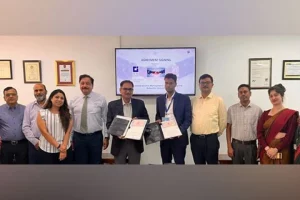A new indigenous software technology solution can now proactively detect and prevent zero-day vulnerability attacks by hackers in 5G networks thereby reducing the need to pay ransom and also decreasing network downtime of 5G networks which are crucial for communication, according to an official statement issued today.
Currently most of the run time zero-day vulnerabilities are identified after the attack has taken place, thereby creating damage to the brand as well as increasing the cost of recovery.
IITM Pravartak Technologies Foundation at IIT Madras, a Technology Innovation Hub for Sensors, Networking, Actuators and Control Systems, along with its startup, is developing an indigenous security testing solution for 5G core network functions and Radio Access Network (RAN) software. The effort is supported by the Centre’s Department of Science and Technology
This technology solution can automatically identify zero-day vulnerabilities in the network in advance by using techniques such as fuzzing and test oracles.
This solution has been manually tested in the 5G security lab of IITM Pravartak. Since it can help avoid the attacks in advance, it protects organisations against loss and saving the credibility of the brands.
The team used ethical hacking for finding vulnerabilities in the system. They tested the functionality issue in the network, created various attack scenarios based on topology, feature interaction, and the number of nodes involved by following the defined 5G standards of 3GPP.
The team is testing interoperability and security issues with multi-vendor products. Tests are conducted at the network packet level, the binary level, the code level and also using the code vulnerability scanners. A combination of all these methods will help reducing zero-day attacks by pre-emption mechanism.
Around 90% of 5G technology is implemented into software by integrating several latest technologies (NFV, SDN, control plane/user plane segregation) which enable testing the technology easily. But attack surface area is increased multifold in this process and is impossible to manage manually. Automating the whole testing process and continuous monitoring is the only sustainable solution.
A zero-day vulnerability is a vulnerability in a system or device that has been disclosed but is not yet patched. Because they were discovered before security researchers and software developers became aware of them—and before they can issue a patch—zero-day vulnerabilities pose a higher risk to users for the following reasons:
•Cybercriminals race to exploit these vulnerabilities to cash in on their schemes
•Vulnerable systems are exposed until a patch is issued by the vendor.
Zero-day vulnerabilities are typically involved in targeted attacks; however, many campaigns still use old vulnerabilities.
Also read: IIT Madras and Indian railways set up 5G testing facility in Secunderabad




















